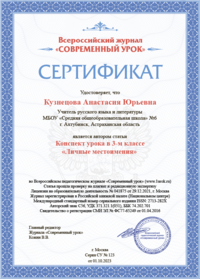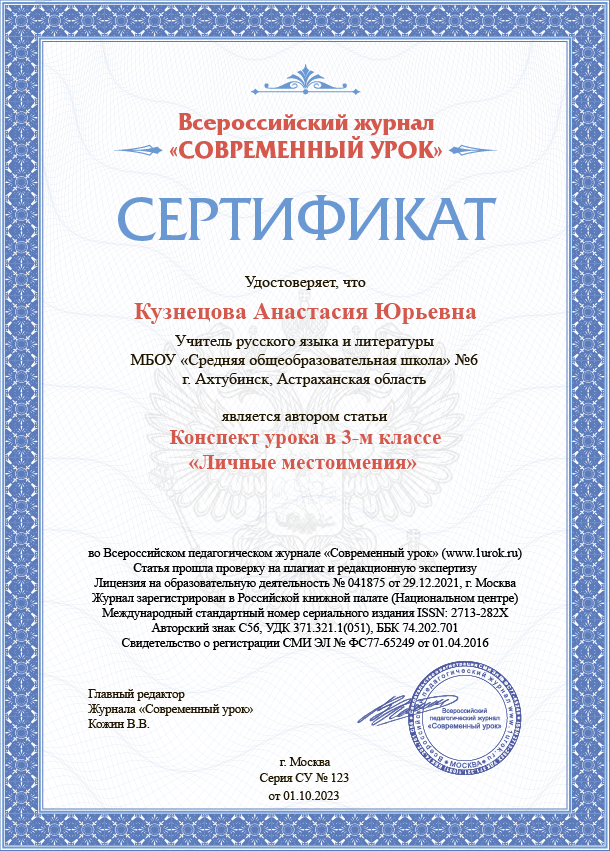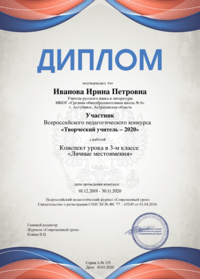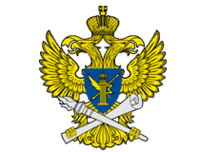Внеклассное занятие на английском языке в 9 кл. «Семейные ценности и традиции различных стран мира»
Автор: Богданова Наталья Станиславовна
Организация: ГБОУ СОШ №606 с угл. изучением англ. языка Пушкинского р–на
Населенный пункт: г. Санкт-Петербург
- Организационный этап
T: - Good morning, students! How are you? I hope you’re fine. Today we’re having an interesting lesson.
- Активное целеполагание, постановка учебной задачи, проектирование результатов урока, мотивация к деятельности
T: - Look at the screen (Slide 1) and answer the question: What can you see?
S: - A Riddle
T: Yes, you are right. Here the theme of our lesson is encrypted. What is the theme of our lesson today?
S: - it is “Peculiarities of family relationships around the world” (Slide 2)
S: - it is “Peculiarities of family relationships around the world”
(Учитель вывешивает на доску 1-ю ступень с названием урока на английском языке и поясняет учащимся, что это 1-ая ступень в лестнице урока, которую они должны пройти до конца и достигнуть цели урока)
T: - Whom can you see in Slide 3?
S: A girl and a boy. They’re thinking about their future family.
T: Have you ever thought about your future family? Have you ever talked about it? What is the aim of our lesson today?
S: We’ll try to describe our future family in English.
T: - By the end of the lesson you’ll learn how to describe your future family, using and analyzing information about the peculiarities of family relationships of different countries of the world. (учитель вешает на доску ступеньку № 5( она с домиком, в котором написана цель урока Monologue “My future Family” - монолог по теме «Моя будущая семья»- это высшая ступень лестницы).
T: What information do we need to get our aim? (Slide 4)
S: The words according to the topic “Family”
T: Yes, you’re right. We’ll repeat them, try to remind types of families.
(Учитель вешает на доску следущую ступень лестницы(№2), на которой написано Kinds of families)What do we value our families for?
S: For family values.
(Учитель показывает Slide 5)
T: Do you think they are the same or different in different countries?
S: - I think, they are different.
S: - I think, they are the same.
T: We’ll try to understand it after listening to the representatives of different countries. (Учитель вешает на доску ступень № 3 Family Values of Different Countries)
T: What do you think about yourselves? Do you have an idea of what your future family will be like?(Slide 6)
The questionary will help you. Then you will try to create and represent the future model of the family.(Учитель вешает на доску следущую ступень №4 с надписью Questionary. Мы соединили все ступени лестницы. Таким образом на доске – лестница из 5 ступеней, показывающая этапы работы на уроке. Бумажный человечек в течении урока передвигается с помощью учителя по ступенькам, достигая цели урока.)
- Актуализация знаний
T: - It is no secret that the family is the Foundation of our society, every person in it must have a family that takes care of him, supports him, it helps to overcome difficulties and, of course, to be close not only in difficult moments, but also in moments of joy. You all know that the main part of education of the child falls on his parents. Are the methods of education in different countries similar? You know that every nation throughout its history has its own norms, values, customs and traditions. Each country has its own unique family features. Of course, many customs are changing because of the influence of the modern world, but most people seek to preserve the heritage of their ancestors — out of respect for their past and to avoid mistakes in the future. What is the difference between families in different countries of the world? Which words can help us to describe the family?
- Фонетическая зарядка
T: - Look at the screen (Slide 7).You can see the list of the words connected with the topic of our lesson. They will help you to describe your future family. Let’s read them. (Эти же слова написаны на лепестках ромашки, которые прикреплены с помощью магнитов к доске)
|
Moral concepts |
|
honesty |
|
trust |
|
patience |
|
responsibility |
|
love |
|
care |
|
assistance |
|
sympathy |
|
attention |
|
support |
|
forgiveness |
|
humanity |
|
faithfulness |
|
understanding |
T: Now listen to the definitions of these words and give your answers.
1. Responsibility - The state of being responsible, accountable(ответственный).
2. Honesty - The act, quality, or condition of being honest.
3. Humanity - Humane traits of character; humane qualities or aspects.
4. Attention - An action or remark(высказывание) expressing concern(concern( [kənˈsɜːn]- забота )for or interest in someone or something, especially romantic interest.
5. Industry - The tendency to work persistently([pəˈsɪstəntlɪ] – постоянно).
6. Love - An intense feeling of affection and care towards another person.
7. Patience - The quality of being patient.
8. Sympathy - an expression of understanding and care for someone else's suffering:
9. Respect - an attitude of consideration or high regard.
10. Understanding - Mental, sometimes emotional process of comprehension, assimilation of knowledge, which is subjective by its nature.
11. Assistance - Aid; help; the act or result of assisting.
12. Forgiveness - The action of forgiving.
13. Faithfulness, fidelity [fɪˈdelɪtɪ] сущ верность - the quality of being faithful to someone or something.
2). Речевая зарядка
T: - Now answer the questions:
What is a family?
S :- Two or more people who share goals and values, have long-term commitments to one another and reside usually in the same dwelling.
S: - Family is a group of people that takes care of a person, supports him, it helps to overcome difficulties.
T: - How many types of families do you know?
S: 6
T: Name them, please. (Slide 8)
S: - Nuclear Family(traditional family) consists of a father, a mother and children. This is the family shown on television as the standard family.
T: You’re right. (Slide 9)
T: (Slide 10)
S: Single Parent Family
The single parent family consists of one parent raising one or more children on his own. (Slide 11)
T: (Slide 12)
S:Extended Family
The extended family structure consists of two or more adults who are related, either by blood or marriage, living in the same home. This family includes many relatives living together and working toward common goals, such as raising the children and keeping up with the household duties. Many extended families include cousins, aunts or uncles and grandparents living together.
T: You are right (Slide 13)
T: (Slide 14)
S: Childless Family
There are couples who either cannot or choose not to have children
T: (Slide 15)
T: (Slide 16)
S: Step Family
Over half of all marriages end in divorce, and many of these individuals choose to get remarried. The new family consists of a new husband and wife and their children from previous marriages or relationships.
T: Let’s check up your answer! (Slide 17)
T: The next Slide (Slide 18)
S: Grandparent Family
Many grandparents today are raising their grandchildren for a variety of reasons. One in fourteen children is raised by his grandparents, and the parents are not present in the child's life.
T: Let’s have a look at Slide 19
T: Now, students you can see Slide 20
3). Систематизация знаний.
T: - Answer the question: how else can we classify a family?
Students give their answers.
T: - To understand if you are right or wrong let’s have a look at the next slide (Slide 21)
T: I’m giving out the cards with characteristic features of a Patriarchal Family and a Democratic Family to each pair of students. The cards are mixed. In 2 minutes you should find out cards with characteristic features to a Patriarchal Family and to a Democratic Family.( Парная работа. В конце её зачитываются ответы и проверяются при помощи слайда 22)
4. Сообщение нового материала, усвоение новых знаний
T: What do we value our family for?
S: - Family values involve all of the ideas of how you want to live your family life, and they are often passed down from previous generations. They can help define behavior in various situations, help youth make good choices, and strengthen ([ˈstreŋθən] гл укреплять) (relationship [rɪˈleɪʃənʃɪp] сущ отношение, связь) that your family has.
T: - Are the methods of education in different countries similar? You know that every nation throughout its history has its own norms, values, customs and traditions. Each country has its own unique family features. Of course, many customs are changing because of the influence of the modern world, but most people seek to preserve the heritage of their ancestors — out of respect for their past and to avoid mistakes in the future. What is the difference between families in different countries of the world?
( Учитель раздаёт таблицы, где в первой колонке написаны основные семейные ценности разных стран мира. Во 2-ой – слово Россия, в 3-ей – Британия; в 4-ой –США; в 5-ой – Япония. Учитель проводит инструктаж детей перед аудированием. Они прослушивают приглашённых гостей из разных стран и отмечают в таблице какие из семейных ценностей есть в этих странах. После аудирования учащиеся делятся на группы, в которых обсуждают отличяются ли семейные ценности в разных странах мира или нет. Свой вывод представители каждой группы говорят в конце групповой работы. Эти таблицы будут полезны учащимся для составления монологического высказывания о своей будущей семье.) Slide 23
T: - I’ve invited teenagers from different countries. They’ll tell us about the peculiarities of family relationships in their countries. You should listen to their stories and fill in the table, where you can see various family values. Let’s read them aloud. (Students read)
T: - During the listening put a tick opposite the values if you hear them. After your work you’ll be divided into 2 groups and will compare the results and analyze them. You should come to the conclusion if family values of different countries are different or the same? Are there any universal values?
Slide 24
S :- Psychology of family in Asia - traditions and rigid hierarchy .In Asia, the ancient traditions are treated with great respect. Each Asian family is separated and almost an isolated unit of society in which children are the main wealth, and men are always respected and revere [rɪˈvɪəd] – чтимый) Asians ... are Hardworking, but they don't see money as the goal of their lives. Divorce in Asia is a rarity. In Asian families, there are always a lot of kids. Asian families often live together with older relatives, whose opinion is the most significant in the family.
Japan
Japanese families are Patriarchy (patriarchy [ˈpeɪtrɪɑːkɪ] прил - Патриархальный).
Man is the head of the family, and his wife is the shadow of the head of the family. Her job is to take care of mental / emotional state of husband and lead economy, as well as to dispose of the family budget. The Japanese wife is virtuous (virtuous [ˈvɜːtjʊəs] прил. – добродетельный) and submissive ([səbˈmɪsɪv] прил.-покорный,послушный, смиренный). Husband never offends her. Still there is a tradition of an arranged marriage. Emotions and romance at marriage
not considered decisive. Emotions and romance at marriage are not considered decisive(decisive прич. - [dɪˈsaɪsɪv] – решающий).
S: - The Portrait of the Family in the USA
Slide 25
Overseas family is, above all, marriage contracts and democracy in all its meanings. What is known about the family values of Americans? Decision about divorce is accepted with ease at loss of former comfort in relations. The marriage contract is the norm for the USA. They are widespread universally. This document prescribes all the details: from financial liabilities (in the event of divorce) to the separation of duties about the house and the size of the contribution from each half to the family budget. There is no head in the US family because of the US "equality”. Family in the USA is not just a couple of lovers who decided to get married but a union where everybody has his or her own duties. Since birth a child is perceived( [pəˈsiːvd] прич. - воспринимаемый ) as an independent person-he is not allowed to manipulate adults and play on their feelings. Since childhood love to the Motherland is instilled( привить) – together they sing the national anthem and pledge of allegiance (allegiance [əˈliːʤəns] сущ верность) at school and in the kindergarten. American children are taught to follow the laws, to obey the rules. When they are about 18-19 they are sent to study to another state or country. Parents pay for their children’s education.Joint dinners, picnics and visits to the amusement Park are facts from everyday life of any family in the United States.
S :- Britain
Slide 26
Here people are restrained([rɪsˈtreɪnd] – сдержанный), pragmatic, prudent (prudent прил. - [ˈpruːdənt] – разумный) and true to their traditions. Finance is on the 1st plan. They give birth to children only after the spouses(spouse сущ. [spaʊz] – супруг) have achieved a certain position. Late baby is a quite frequent phenomenon (phenomenon сущ. [fɪˈnɔmɪnən] – явление).British People are known to be accurate: in work, in society, in the family — The order should be everywhere. Everything should be perfect : from raising of the children and design of the house to the socks in which you go to bed. Before the official registration of relations young people usually live together to check whether they fit each other. And only when check is passed, you can think about creating a family. After 18 years, the child leaves his parents ' home, now he provides himself. Grandparents don’t sit with their grandchildren as in Russia — they just hire a nanny.One of the mandatory( прил. -[ˈmændətərɪ] – обязательный) traditions is family lunch or tea time.
S: - Russia
Slide 27
In our country there are a lot of nations (about 190). We cherish our ancestors' traditions. Russian families are large and friendly. The meaning of the family in Russia is not limited to the husband, wife and children. It stretches to include grandparents, aunts and uncles, brothers, sisters, nephews and nieces. The members of the Russian family closely communicate with each other and frequently get together, especially on such family occasions as birthdays and anniversaries. Just like in any family, there might be misunderstandings and even quarrels among family members, however one thing is certain: Russians cherish their families and are always ready to help their relatives in difficult times. The tradition that everyone should love their own home and protect their family is instilled(instilled [ɪnˈstɪld] прич.прививаемый) in Russia since the early childhood. I want to note that Russian grandparents help to babysit with their grandchildren with great pleasure.
Table Family values of different countries
|
Family values |
Russia |
Britain |
The USA |
Japan |
|
1.Having one marriage in a lifetime |
|
|
|
|
|
2.Mutual upbringing of children |
|
|
|
|
|
3.Accommodation with elderly parents |
|
|
|
|
|
4.Helping with babysitting |
|
|
|
|
|
5. Paying for children's education |
|
|
|
|
|
6. Having equal rights of spouses |
|
|
|
|
|
7.Having a man as the head of the family |
|
|
|
|
|
8. Upbringing of early children’s independence |
|
|
|
|
|
9. Financial sufficiency |
|
|
|
|
|
10.Good family relationships (including respect and affection) |
|
|
|
|
|
11.Cherishing family customs and traditions |
|
|
|
|
|
12.Love to the motherland |
|
|
|
|
|
13.Rational using of money |
|
|
|
|
Работа в группах, после которой ребята приходят к выводу
S: - Though there are some peculiarities in different countries all over the world the main family values of different countries are the same. There some universal values.
- Применение знаний.
Working with the questionary
T: - Now, tell me do you have any ideas what family will you have in the future. Have you ever done it in Russian? I propose to create a model of your future family by answering the questions. You should sum up all the materials you’ve heard and use the universal list of Family Values you’ve just got. (Group work) Answer the questions and get ready for the monologue. Questionary (My Future Family)
- What is a family? ? (don’t forget to use expression of opinion list)
- At what age do you want to have your own family?
- By 18 years old
- From 18 to 20 years old
- From 20 to 25 years old
- From 25 to 30 years old
- After 30 years old
- It’s difficult to answer
3. What kind of family would you like to have? Why? (don’t forget to use expression of opinion list)
4. Do you want to have your own family similar to the parents’ one?
a) Yes, I do.
b) Rather want, than don’t want.
c) Rather don’t want, than want.
d) No, I don’t.
5. What are “Family Values”? ( don’t forget to use expression of opinion list)
6. What family values do you want to take to your future family? Why?
7. Use 3 words to say briefly: what is a family for you? (To summarize I’d say that for me my future family is…( to choose 3 moral concepts on the blackboard – слова на лепестках ромашки, которые повторялись во время речевой зарядки)
(Ученикам даётся время на подготовку монологического высказывания. Во время ответа они выходят к доске, где в центре учитель вешает серединку от цветка ромашки, в которой написано “The family is…” Отвечая на 7 пункт анкеты учащиеся выбирают из лепестков со словами, означающими нравственные понятия: любовь; забота и т.д. В итоге – на доске – цветок ромашки, составленный учащимися, символизирующий понятие «Семья» и на лестнице с этапами урока бумажный человечек находится на самой последней ступени в домике с надписью Monologue “My future Family”
- Рефлексия
T: - Now it’s high time to sum up the results of the lesson.( Учитель обращает внимание на человечка на доске.)
T: - 1). Have we visited any step of our stairs?
2). Have you made up the monologue “My future Family”?
3). Has the man reached the aim?
3). Was it difficult to describe your future family in English?
Now fill in the table.
|
At the lesson I was active |
At the lesson I was passive |
|
I liked the way I worked at the lesson |
I didn’t like the way I worked at the lesson |
|
I understood the material of the lesson well |
I don’t think I understood the material of the lesson well |
|
I came to the conclusion that the main family values are the same in different countries |
I came to the conclusion that the main family values are different in different countries |
|
I think this lesson was useful for me because I managed to imagine the model of my future family. |
In don’t think this lesson was useful for me as I didn’t manage to imagine the model of my future family. |
(Учитель подводит итоги, анализируя ответы учащихся)
T: - Today your work was excellent. Our lesson is over. Good bye!
Полный текст статьи см. приложение

 БЕСПЛАТНЫЕ семинары
БЕСПЛАТНЫЕ семинары





